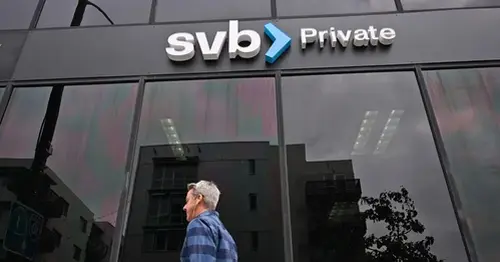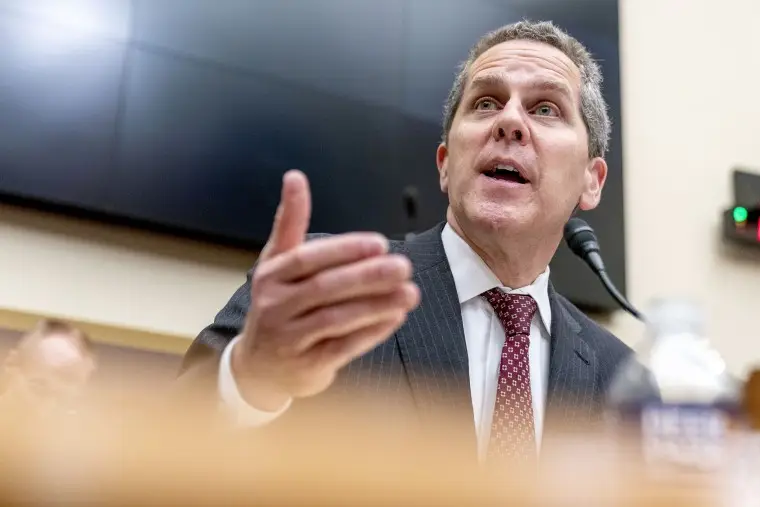
After SVB collapse, some lawmakers weigh having regulators watch TikTok and Twitter for bank panics
After a handful of influential voices took to social media during the meltdowns of Silicon Valley and Signature banks this month, some lawmakers have floated a new idea: Task bank regulators with keeping tabs on TikTok, Twitter and other platforms to head off future bank panics.
Rep. Ritchie Torres, D-N.Y., introduced legislation Wednesday that would require the Financial Stability Oversight Council, a coalition of U.S. financial regulators, to monitor social media platforms for “any indicator of a potential bank run or financial panic at a level that potentially threatened the financial stability of the United States.”
Torres, who announced the proposal on MSNBC, said monitoring social media could also address concerns over foreign interference.
“I worry that a malicious foreign adversary could manufacture financial panic on social media to destabilize the American banking system,” Torres said on MSNBC’s “Morning Joe.”
At a House Financial Services Committee hearing Wednesday, several other lawmakers expressed worry about social media’s role in triggering bank runs. Rep. Blaine Luetkemeyer, R-Mo., said he had “grave concerns” about that possibility.
Bank regulators acknowledged this week that online panic may have helped hasten SVB’s failure, although they also cited the ease of pulling deposits due to digital banking.
“I do agree that the runs that occurred at Silicon Valley [Bank] were unprecedented in speed and size, aided by social media and technology,” Nellie Liang, the undersecretary of the treasury for domestic finance, said in congressional testimony Wednesday. “Those are new risks that challenge the banking system and the financial system and are those we definitely need to be considering and working with Congress.”
Three weeks ago, SVB dumped a bad bet on interest rates that cost it $1.8 billion, sparking fears among depositors that it was strapped for cash.

“In response, social media saw a surge in talk about a run, and uninsured depositors acted quickly to flee,” Fed Vice Chairman of Supervision Michael Barr told Congress this week.
Bank customers pulled $42 billion on March 9, according to the Federal Deposit Insurance Corp. Regulators told Congress this week that on March 10, depositors tried to pull $100 billion more — nearly all the deposits the bank had left.
During those two days, Twitter lit up with discussion about SVB’s fate. The community that the lender primarily banked with — venture capitalists, startup founders and private equity firms — includes many personalities with sizable social media presences.
As some venture capitalists privately pushed their SVB-banked businesses to pull deposits, the discourse on social media morphed into a real-time exercise of game theory as SVB customers deliberated over whether to withdraw their money. Amid SVB’s collapse, some prominent VCs warned of “DEF CON 1,” as others predicted that regional banks would “be decimated.”
David Andolfatto, a former official with the Federal Reserve Bank of St. Louis, said he is skeptical that social media sped SVB’s failure. He referred to the famous depiction of a small-town bank run from the 1946 film “It’s a Wonderful Life.”
“People ran very quickly. Most people were around the bank locally,” said Andolfatto, now the chair of the economics department at the University of Miami. “Five steps away from where they work and live — that’s about as fast as you can get to the bank.”
Peter Conti-Brown, a professor of financial regulation at the University of Pennsylvania’s Wharton business school, also cast doubt on social media’s role in the crisis, saying SVB failed simply because “it was a bad bank.”
But Conti-Brown said technology did play a role, because digital banking makes it easier than ever to withdraw funds.
SVB “failed with spectacular speed because the technology of bank withdrawals don’t require you to stand in line with high blood pressure to see if your withdrawal would be honored,” he said.






